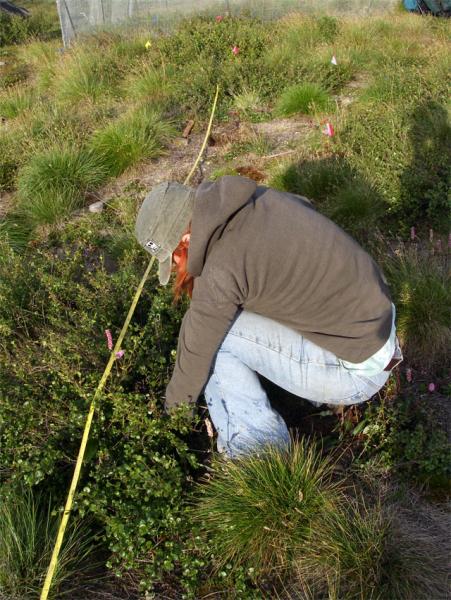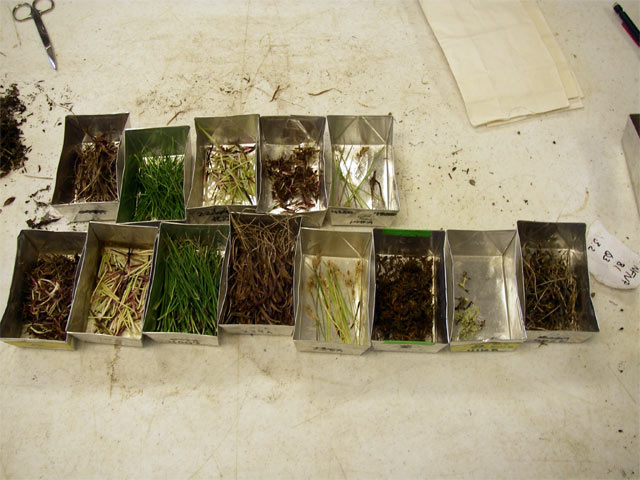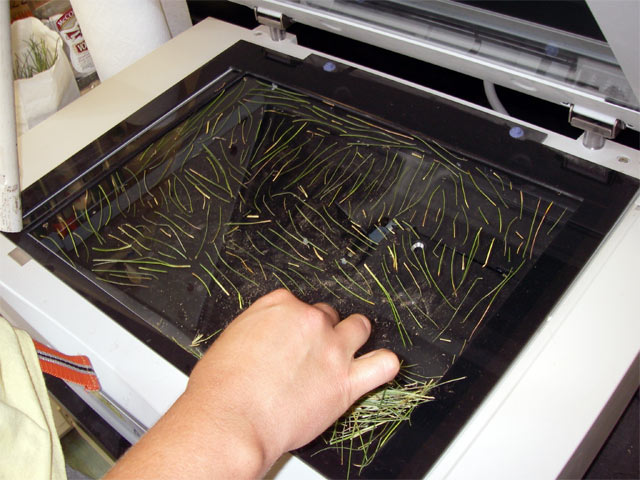( Log In ) Log In is for TREC Teachers & Researchers only
  |
| Charla_Jordan |
 Jul 29 2006, 08:30 AM Jul 29 2006, 08:30 AM
Post
#1
|
 Advanced Member    Group: TREC Team Posts: 36 Joined: 12-April 06 Member No.: 28 |
July 24, 2006 – The Pluck
Temperature 75, Sunny Today starts the first day of what is called the “Pluck” here at Toolik. Whenever you talk to someone around here and tell them that you are going to be plucking today, they laugh and say “have fun!” Why all of the laughter? What is a pluck? A pluck seems to be a time honored lab experiment that many have done and many have lived to tell about. The pluck starts with sampling. In the tundra, a 20cm x 20cm area is measured out, and then cut out. The sample is collected as deep as possible. In the MAT (moist acidic tundra) that is about 6-7 inches. The MAT is very wet, boggy almost. It is like walking on a sponge. In the dry heath, that is about 2-3 inches. The dry heath is on rocky terrain and the soil is only a few inches deep before you hit rock.  Amie taking a sample The sample is then brought back to the lab to be processed. The sample is removed and examined.  Tussock sample The block of tundra is then dissected in the different species of plants, mosses, lichen, liter (dead stuff) and rhizomes. It is physically, carefully pulled apart and separated.  After all of the different species of plant are separate, then it is time to separate the different tissues within a plant species. For example, a grass would be broken into the blade, shoot, rhizomes, and the dead material. Other evergreens would be broken into new leaves, new stem, old leaves, old stem, and rhizomes. Every little piece of the plant is placed into tins to keep them from mixing.  When all of the different species have been separated into tissue it looks like this:  Next, we bag and tag them.  Then we scan the leaves to measure surface area of them.  After all of that, we then place them in the oven to dry. Next week we will measure and record the amount of biomass for each tissue, species, and quadrate. The whole process takes about 2-3 hours to do one of the quadrates—and we have about 16 quadrates to do everyday. It has been nice so far because people from other labs have come to help us in their spare time, but still we worked 16 hours today. Tonight we had a special event. It was Christina’s birthday in the camp today and her friends through her a party. The kitchen staff cooked Mexican food, because that is the theme of her surprise party, and made a cake for her. We all sang Happy Birthday and that was all—she thought. Her friends had planned a surprise party that night for her. They made Piñatas and asked the camp band to play.  Caribou Piñata made out of lab supplies  Various other Piñatas and toys  The band! She was quite surprised and had a blast.  Happy Birthday, Christina! We could only stay a little while—we had to get back to work. If you did not notice the time on my journal entries, I usually stay up between 10:00pm and 12:00pm to finish them. Tonight I stepped outside at midnight and snapped this picture of the midnight sun. Because of the Earth’s tilt there is 24 hours of sunlight right now. This is the lowest the sun goes in the sky. This was a great view to end a long day.  Midnight sun |
  |
1 User(s) are reading this topic (1 Guests and 0 Anonymous Users)
0 Members:

|
NSF Acknowledgment & Disclaimer | Time is now: 16th November 2024 - 07:25 PM |
Invision Power Board
v2.1.7 © 2024 IPS, Inc.








